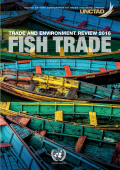
Moving to a low-carbon future will create challenges for Canada's fossil-fuel industries, but opportunities in the form of a new market for low-carbon goods and services. The challenges for the resource sector will vary across commodities. Competition in the new market for low-carbon goods and services will be tough; sustained competitive advantage will be difficult to maintain due to capital mobility. With these challenges in mind, this article proposes three questions for Canadians looking ahead to a low-carbon future. First, how large will the market for low-carbon goods and services be? Second, where are Canada's advantages likely to lie in serving these markets? Finally, what are the roles for Canada's existing natural-resource industries in a low-carbon economy, and what are the strategies to maximize the value of these resources?
This report is a review of best practice greening opportunities for Asian beef supply chains. It includes feed and livestock production; meat processing; value-added and by-products processing; transport and distribution; and finally domestic consumption. Consideration is given to both advanced and less developed supply chains and the issues faced by actors in these supply chains. The report is expected to serve as a point of orientation for practitioners in their adoption of green industry policies and practices and improvements that can be made in environmental performance. Where appropriate, a 'closed-loop' approach is presented whereby all by-products are recovered and usefully applied to the highest possible level.
The Industrial Development Report 2013 examines the role of structural change and employment and explores the underlying drivers of structural change in manufacturing. While manufacturing employment is growing in developing countries, its decrease in developed countries is being mitigated by the rise in manufacturing-related services employment. The food and beverages and textiles and garments industries offer least developed countries tremendous potential for industrialization, whereas high-tech industries hold numerous opportunities for developed countries to invest and innovate and to thus sustain jobs. The impact of the critical drivers of structural change and industrialization—namely costs, technology, demand and resource efficiency—to sustain employment hinges on the industrial policies adopted. These must therefore be geared towards the structural transformation of the economy and will only be effective if the policy-making process plays as important a role as the policy content.
This analysis conducted by the Global Green Growth Institute (GGGI), the German Development Institute (DIE) and UNIQUE examines the growth potential for timber products nationwide and provides detailed recommendations in four priority chains: pre-sized dry sawnwood, fiberboard and particleboard, pallets, and wooden furniture.
